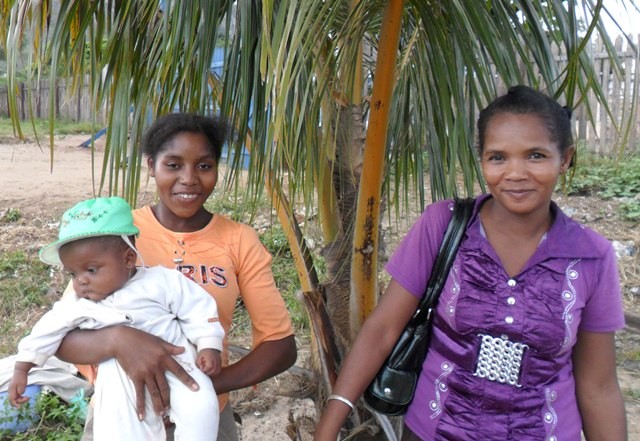
When Erline in Madagascar became pregnant with her first child, her family preferred that she give birth at home because it was less expensive than visiting a health center. After all, a traditional birth attendant typically charges $5—about an average week’s pay—while a birth at a facility would require transport, food and medicine costs, and cost three to four times that amount. However, a visit from a USAID-trained community health worker helped Erline and her family understand the risks of giving birth outside a health facility. And ultimately, when they considered the health of Erline and her baby, they chose the safer option.
In Madagascar, fewer than 40 percent of women deliver in a health facility. This is largely due to the cost as well as poor transport and roads. In some communities, the nearest health center is a two-day walk away. Every day, 10 women in Madagascar die due to complications from pregnancy and childbirth, but most complications are preventable and treatable. Giving birth in a health facility with the assistance of a skilled provider means that problems can be identified and addressed early, and in turn there are better outcomes for mothers and their babies.
When describing her decision to give birth at a health facility, Erline said: “I was worried about my baby suffering complications. If she has trouble breathing, there wouldn’t be anyone at home to help her. When I chose a facility birth, I didn’t look at the cost. I looked at the dangers.”
Through an integrated maternal and child health program, USAID is training community health workers to help women and their families plan for safer births. These health workers not only convey the importance of giving birth in a facility, but also how to be prepared for other problems that may arise. This includes setting aside money for birth-related emergencies, identifying blood donors in case of complications, and designating family members to take care of the house and other children. They also educate families about hand-washing and hygiene, and how simple practices can have important benefits to their health. The health workers hold weekly village meetings and each one has approximately 40 female clients.
After consulting with her community health worker, Erline was ready to give birth when the time came. She had money set aside for the seven kilometer journey to the health center. Since she lives in a rural area without roads or motorized transport, she had arranged for two men to carry her on a stretcher made of tree trunks and cloth. The birth at the health center went smoothly and her baby, Priscilla, is now four months old and healthy.







Comment
Make a general inquiry or suggest an improvement.